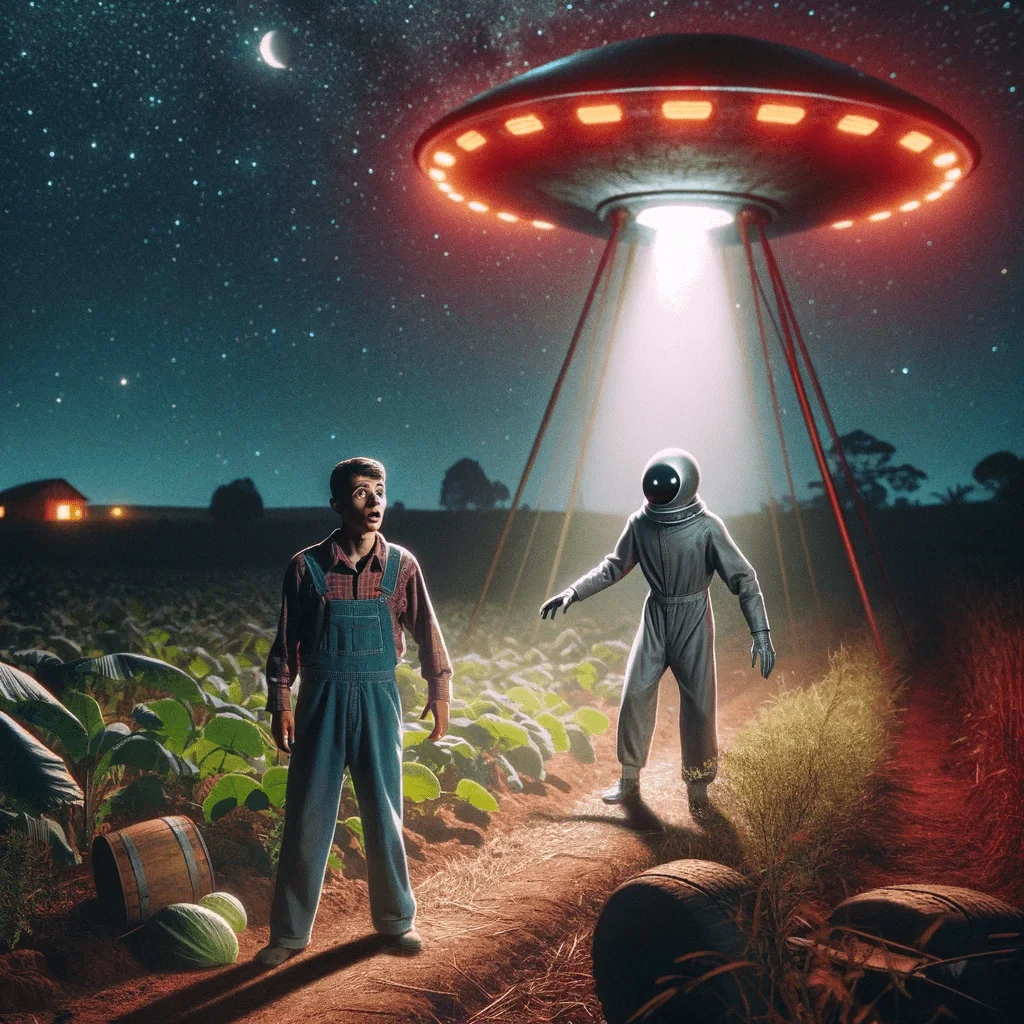Antonio Vilas-Boas Abduction (1957)

The story began on October 16, 1957, on a farm in Sao Francisco de Sales, Brazil. Antonio Vilas-Boas, a 23-year-old Brazilian farmer, was plowing fields late at night to avoid the daytime heat. It was during these nocturnal labors that Boas claimed to have witnessed a “red star” descending from the heavens. This star, he asserted, transformed into a clear, egg-shaped craft that landed on three extended legs in his field.
The alleged encounter did not stop there. Boas claimed that he tried to flee on his tractor, but was seized by a small humanoid being wearing grey overalls and a helmet. He was then led into the craft where he was stripped, covered in a strange gel, and forced to breathe in an unusual gas that made him violently ill.
In the next phase of his account, Boas described a bizarre, intimate encounter with a female entity. She had cat-like eyes, high cheekbones, and a pointed chin. After the encounter, the entity gestured to her belly, pointed to the sky, and left, leading Boas to believe she would raise their offspring in space.
Boas was then given a tour of the ship by the humanoids, who communicated in a language he could not understand. After about four hours, he was released unharmed, and the craft ascended into the sky.
After the event, Boas suffered from nausea, weakness, headaches, and lesions on the skin which he attributed to the strange gas he was forced to inhale. His story was corroborated by Dr. Olavo Fontes of the National School of Medicine of Brazil, who examined Boas and found his account, along with his physical symptoms, compelling.
Dr. Fontes, who initially interviewed Boas, believed that he was telling the truth, citing the physical symptoms he exhibited as evidence.
The story of Antonio Vilas-Boas has been detailed in several books and publications. Among them is “Flying Saucers: A Modern Myth of Things Seen in the Sky” by Carl Jung. In this book, Jung analyzes the UFO phenomenon, including Boas’ account, from a psychological perspective, suggesting that such events may represent a modern manifestation of ancient myths and collective unconscious.
Another notable book is “Alien Abduction: The Evidence and the Auguments” by Jenny Randles. This work looks into the science and skepticism behind alien abductions, examining cases like Boas’ and offering a balanced view. Randles discusses the physical and psychological aspects of Boas’ story and speculates on possible explanations.
One of the most intriguing aspects of the Boas case is its timing. It pre-dates the more famous Betty and Barney Hill abduction case, which is often cited as the first of its kind. Boas’ story, having occurred in rural Brazil, also challenges the assumption that abduction narratives are a primarily North American phenomenon, associated with Cold War anxieties and cultural factors.
Furthermore, Boas’ claim of having fathered an extraterrestrial child became a recurring theme in later abduction reports, a pattern that fuels speculation about possible genetic experimentation by aliens.
Antonio Vilas-Boas remained consistent in his account until his death in 1992. Whether his experience was a product of psychological phenomena, a constructed narrative, or a genuine encounter with extraterrestrial beings continues to be a topic of debate.

